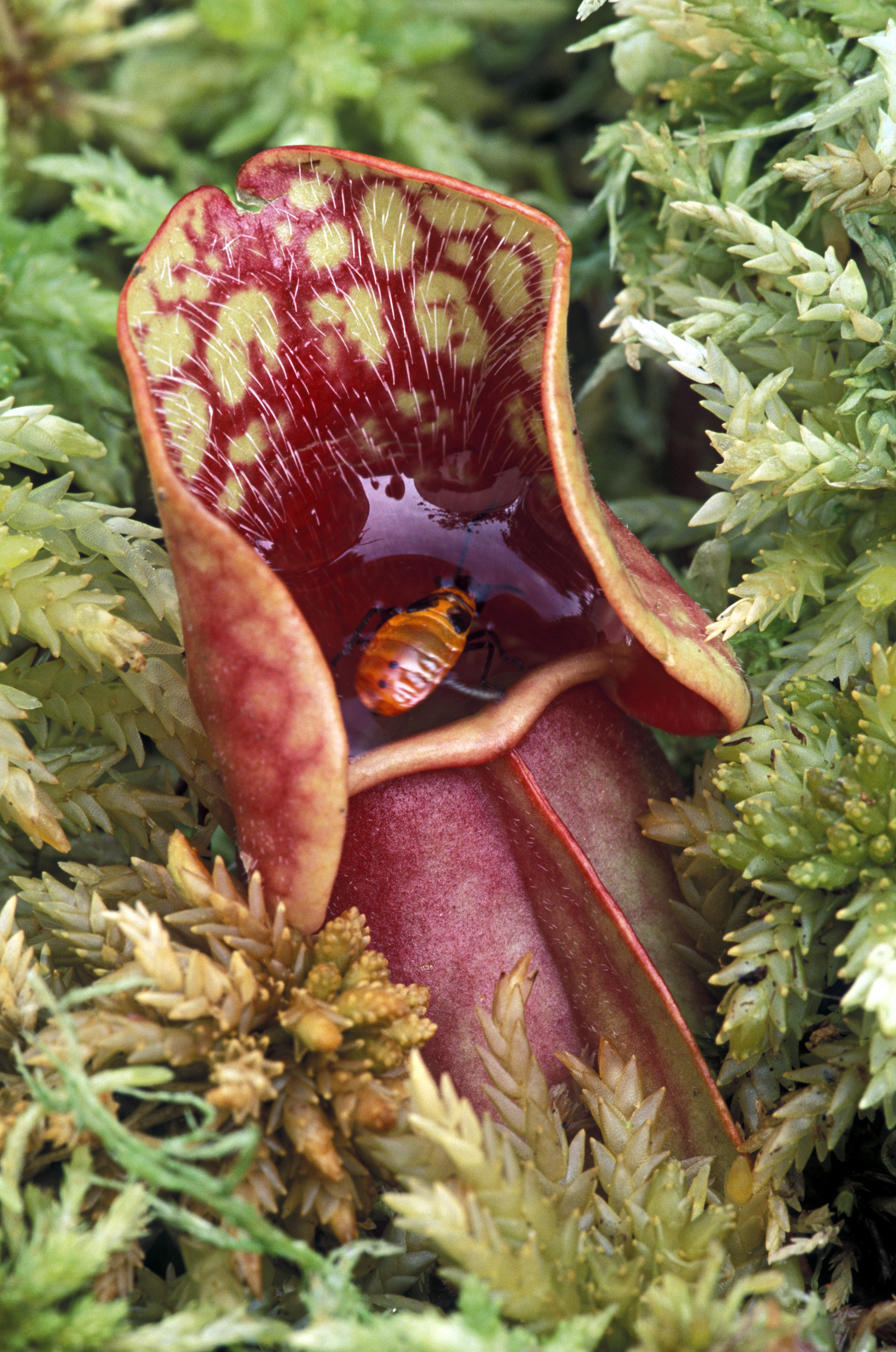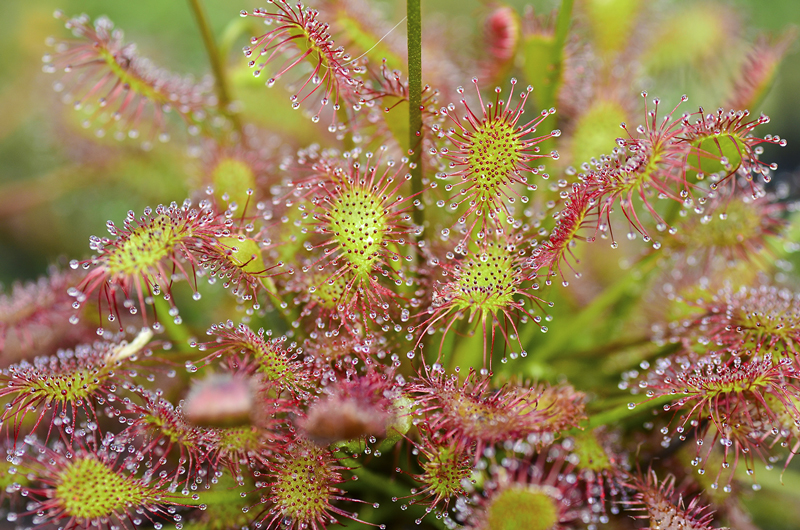Bog is a kind of wetland with soil that is acidic and low in oxygen and minerals. These conditions hinder the decay of dead plant material, which accumulates as peat. In well-developed bogs, the peat forms a springy, spongy soil in which plants grow. Bogs usually develop where drainage is poor.

Bogs support only limited numbers and kinds of plants and animals. Notable bog plants include peat mosses and carnivorous plants—insect-trapping plants, such as the sundew and pitcher plant. Peat mosses form green, red, or brown carpets across the peat surface, often occupying most of the peat. Many insects live in bogs, especially beetles, dragonflies, and mosquitoes. Birds, frogs, and bog lemmings also live in bogs.
Early in the development of a bog, peat forms just a thin mat that floats on the surface of a lake or pond. These floating mats sink somewhat when walked on and cannot support the growth of large trees. Bogs in this stage are called quaking bogs. In older bogs, the peat accumulates enough to completely fill in the water. The peat no longer quakes and can support trees.
Bogs are especially common in cool and wet climates. In the United States, bogs are most common in Alaska, Maine, and Minnesota. Bogs are also common in Canada, northern Asia, northern Europe, and New Zealand. Vasyuganye Bog, thought to be the world’s largest, covers more than 30,000 square miles (50,000 square kilometers) in western Siberia.


Bog conditions preserve animal tissues as well as plant material. Remarkably preserved human remains called bog bodies have been found in many bogs in northern Europe. Some of these bog bodies are more than 5,000 years old.
See also Carnivorous plant; Peat; Peat moss; Wetland.
